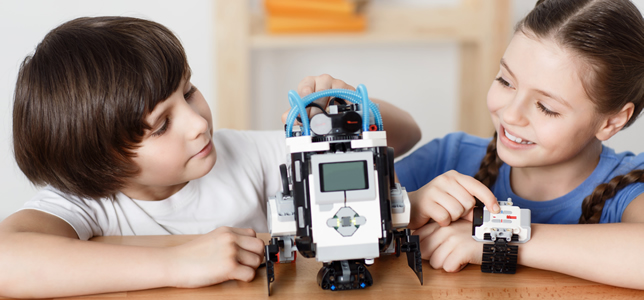STEM education in the U.S. is increasing in popularity—more schools are implementing STEM learning into their curriculum and making it an integral part of what they teach. In this article, we will discuss the 7 benefits of STEM education

Fosters ingenuity and creativity:
Ingenuity and creativity can pair with STEM and lead to new ideas and innovations. Without ingenuity and creativity, the recent developments in artificial intelligence or digital learning would not be possible. These technologies were created by people who learned that if the human mind can conceive it, the human mind can achieve it. No doubt they had a great K-12 STEM education teacher.
Builds resilience:
During STEM education activities, students learn in a safe environment that allows them to fall and try again. STEM education stresses the value of failure as a learning exercise, which will enable students to embrace mistakes as part of the learning process. This allows students to build confidence and resilience, which will enable them to keep going when the going gets rough. After all, failure is part of a process that ultimately leads to success.
Encourages experimentation:
Without a little risk-taking, and experimentation, many of the technological advancements that have occurred in the last couple of decades would not be possible. Many of these innovations were created by people who were told that their ideas wouldn’t work and their response was, “Let’s try it and see.” This type of attitude can be encouraged with STEM learning during the K-12 years. How can you accomplish this? By allowing students to experiment and take risks during learning activities.
Encourages teamwork:
STEM education can be taught to students of all ability levels. Students of varying levels of ability can work together in teams to find solutions to problems, record data, write reports, give presentations, etc. The end result is students who understand how to collaborate with others and thrive in a team-oriented environment.
Encourages knowledge application:
In STEM education, students are taught skills that they can use in the real world. This motivates students to learn, as they know that the skills that they acquire can be utilized immediately, and in ways that positively impact them and their loved ones. The ability to apply their knowledge to new and novel tasks will bode well for them when they enter the workforce.
Encourages tech use:
STEM learning teaches kids about the power of technology and innovation. So, when students encounter new technologies, they will be prepared to embrace them, instead of being hesitant or fearful. This will give them the upper hand in the global landscape, as the world is becoming increasingly tech-centered.
Teaches problem-solving:
STEM education teaches students how to solve problems by using their critical thinking skills. By engaging in STEM learn experiences, students learn how to examine problems and then create a plan to solve them.
Encourages adaption:
To succeed in life, students have to be able to apply what they have learned to a variety of scenarios. STEM education teaches them to adapt the concepts that they learn to various iterations of a problem or issue.
What did we miss?

Want to discover more STEAM resources for your classroom?
Check our products page and start your STEM lessons with RobotLAB! and our learning Platform EngageK12!
RobotLAB products Take me to Engage! K12
This article is original from The Edvocate: https://www.theedadvocate.org/7-benefits-of-stem-education/
